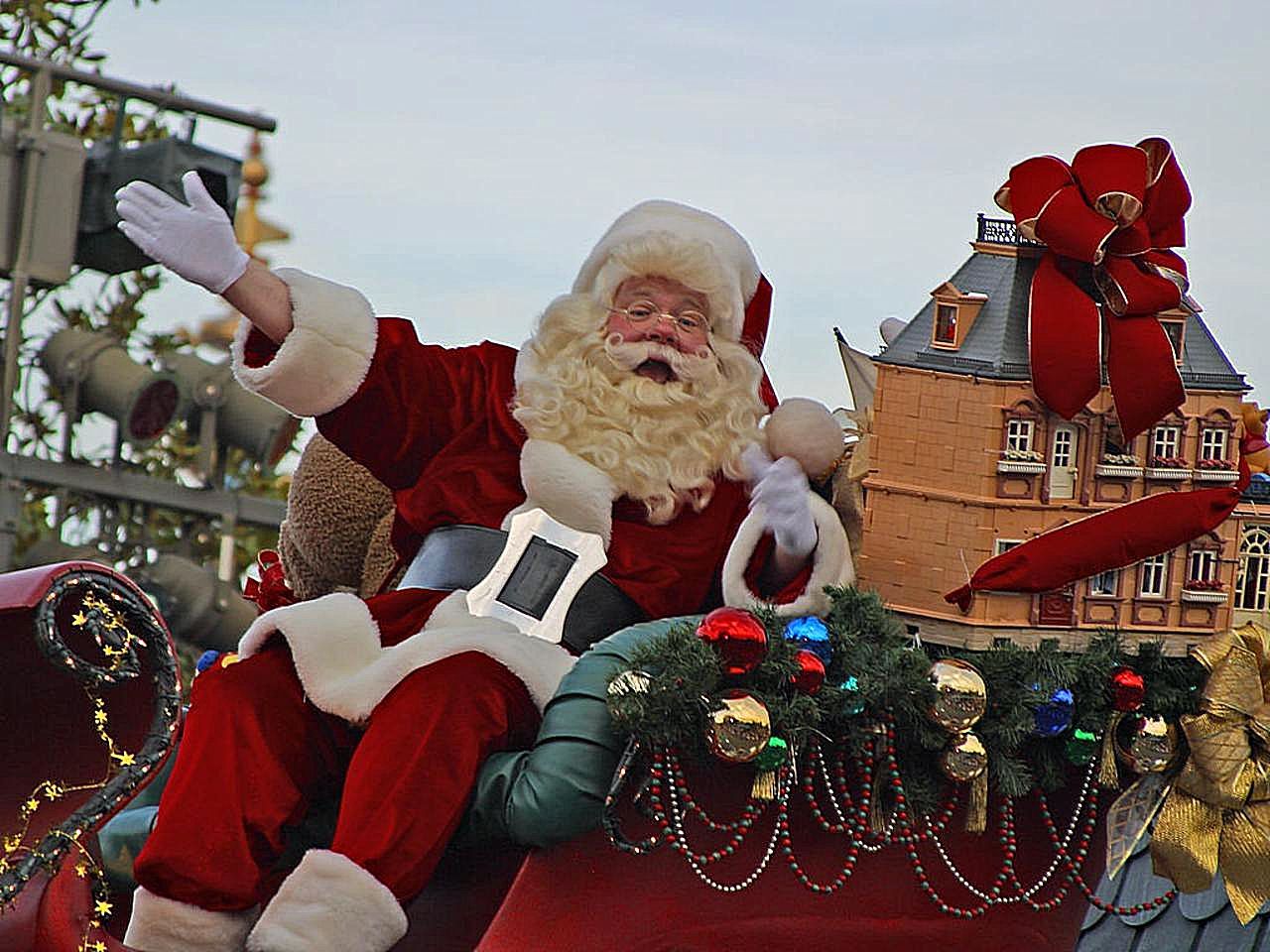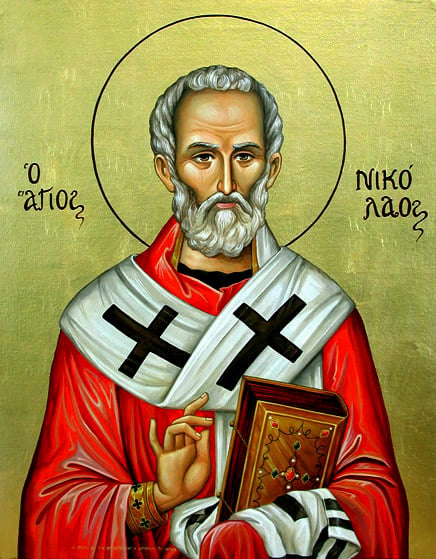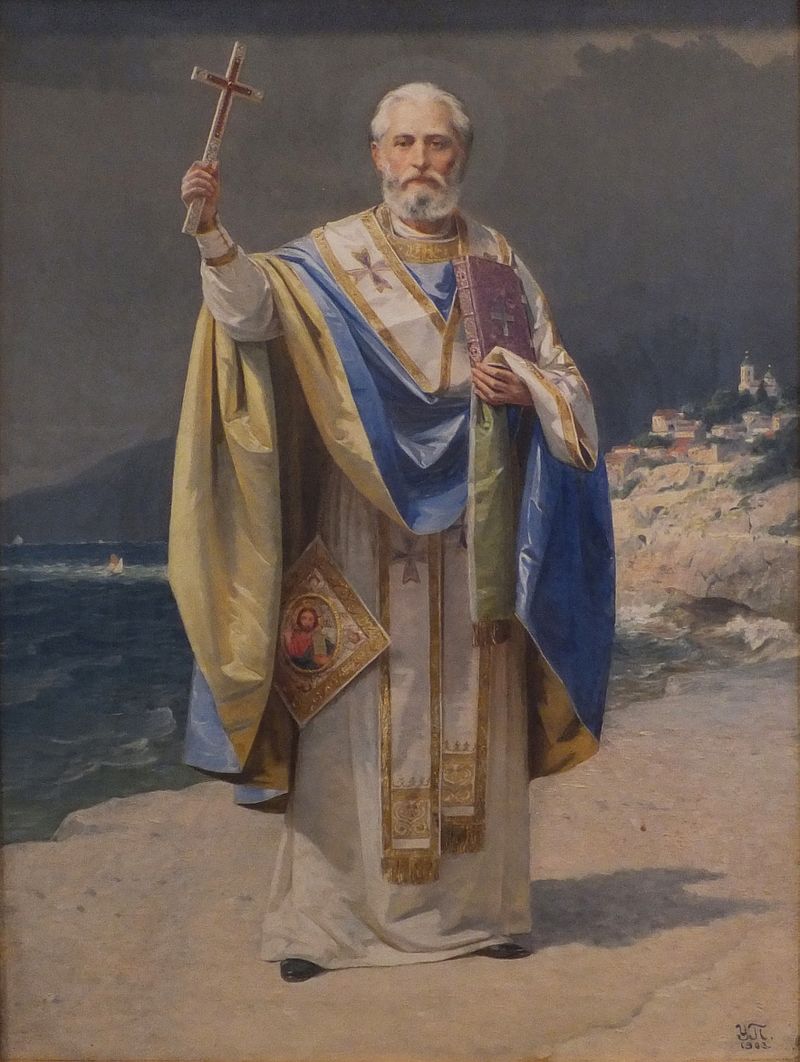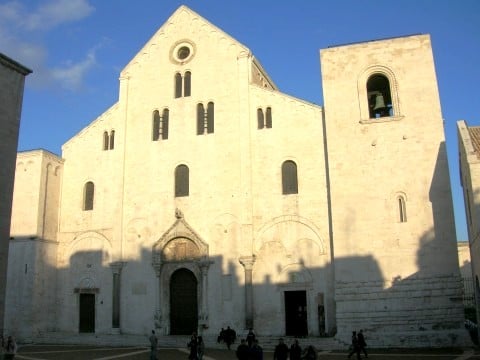
Greece celebrates Saint Nicholas, who, according to the Christian Orthodox faith, is the predecessor of Santa Claus, on December 6th.
The omnipresent, joyous, white-bearded man who dressed in red most of the time, became particularly popular in the 19th century, but his story unwinds back into the past of Bishop Nicholas. He was the devoted Greek bishop who lived in the 4th century in the Lycian town of Myra in Asia Minor.
Although Santa Claus, or Father Christmas, is the figure that all nations with Christian traditions associate with the Christmas holiday, one major difference exists between the Greeks and the rest of the world regarding the identity of the man who brings good children their gifts at this most special time of year.
In Greece, the Americanized version of Santa Claus simply does not exist, and children await their beloved Agios Vasilis (Saint Basil) to bring them gifts on New Year’s Day. Although this classic image of Santa Claus originated from Western Europe, his name is clearly a derivation of “Saint Nicholas” since “Claus” is a foreshortened Germanic version of the name “Nicholas.”
The name Sinterklaas, or St. Nicholas, as he was known by the Germanic peoples became Anglicized to “Santa Claus.” This happened as part of a completely natural merging of traditions between many of the early Western European immigrants who made America their new home.

St. Nicholas, or Santa Claus, was Bishop of Myra

Serving as Bishop of Myra, he was also known as a participant in the seminal Council of Nicaea in the year 325, during which the adoption of the Nicene Creed took place. The Creed forms the basis of the belief system of Christians.
He was later cast into prison during the persecution of Diocletian but was released after the accession of Constantine. At the time, Saint Nicholas was reported to have spoken out vociferously against the Arians or those who believed that Jesus Christ was not divine but completely human.
An anecdote that has survived through the millennia says that Nicholas either slapped the face or boxed the ears of one of his ideological opponents. Whether or not this is true, another action of his, much more generous, was recorded as well. A poor family in Myra with many daughters was known to have fallen upon hard times, which were so dire in fact that the father was considering selling one of his daughters into slavery just so the others could survive.
To save her from such a horrendous fate, Saint Nicholas threw gold coins down the chimney of the man’s house, thereby saving her and rescuing the family from their predicament. Whether or not things happened in exactly this way, it was Saint Nicholas who was said to have committed this act of kindness, and this is the reason why he is associated with chimneys.
One version of the story even holds that the gold coins landed in the girl’s stocking, which she had hung up on the mantel to dry. And of course, this is why gold coins—actually made of chocolate—are gifted at Christmastime.
Fewer than two hundred years after Nicholas’s death, St. Nicholas Church was built in Myra under the orders of Theodosius II over the site of the church where he had served as bishop. Nicholas’ remains were moved to a sarcophagus in that church.
In 1087, the Christian Greeks of the region were subjugated by the newly arrived Muslim Seljuk Turks. Soon afterward, a group of merchants from the Italian city of Bari removed the major bones of Nicholas’ skeleton from his sarcophagus in the church without authorization and brought them to their hometown.
They are now enshrined in the Basilica di San Nicola. The remaining bone fragments from the sarcophagus were later removed by Venetian sailors and taken to Venice during the First Crusade.

Saint Nicholas: A Christianized version of the ancient god Poseidon
Another theory associates Saint Nicholas with the ancient god Poseidon, who tormented Odysseus for killing his son Polyphemos by keeping him away from Ithaca for many years.
Among the Greeks and Italians, he is a favorite of sailors, fishermen, ships, and sailing. As such, over time, he has become the patron saint of several cities maintaining harbors just like in the case of Myra.
In centuries of Greek folklore, Nicholas was seen as “The Lord of the Sea,” often described by modern Greek scholars as a kind of Christianized version of Poseidon. When Christianity was established as the formal state religion of the Roman Empire, churches began to rise in the ruins of the temples of the former deities of the ancient Greeks.
According to many religious historians, Nicholas’ life story and legends resemble much of the mythology and legends attributed to the ancient Greek god Poseidon, the Roman god Neptune, and the Teutonic god Hold Nickar.
Furthermore, the feast day of St. Nicholas is December 6th, the day when the bishop of Myra is reported to have died (342 AD). This day is speculated by many to likely have been a feast of Poseidon in pre-Christian times, marking the beginning of winter and possibly the day when navigation ended and ships returned to harbors.
In Athens and other parts of ancient Greece, there was a month that roughly corresponded to December or January and was named Poseidon for the sea-god Poseidon.
See all the latest news from Greece and the world at Greekreporter.com. Contact our newsroom to report an update or send your story, photos and videos. Follow GR on Google News and subscribe here to our daily email!



